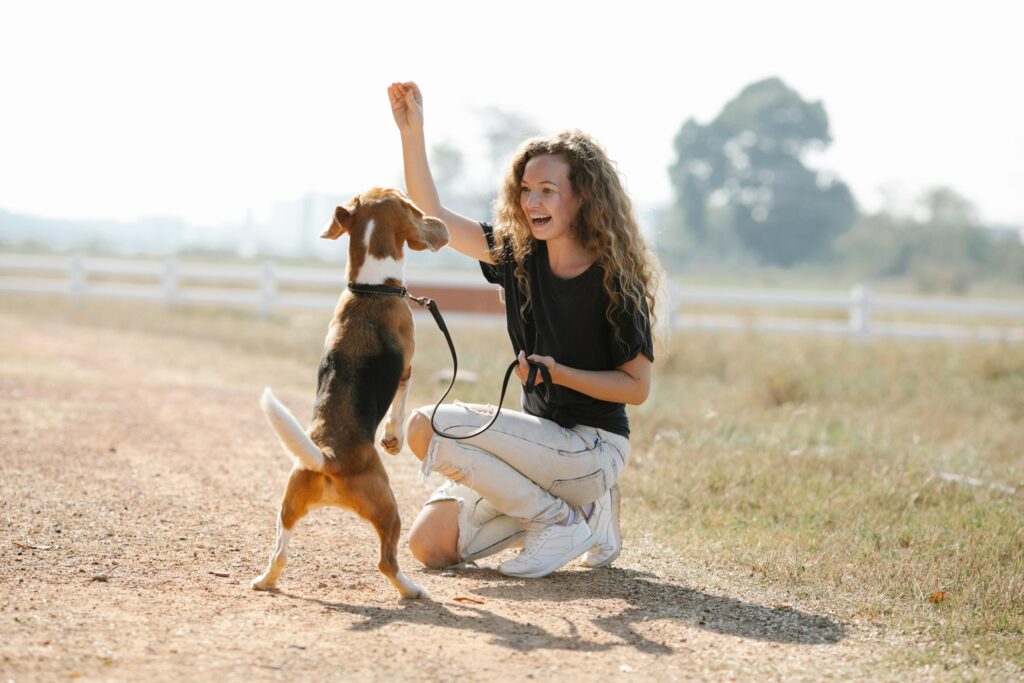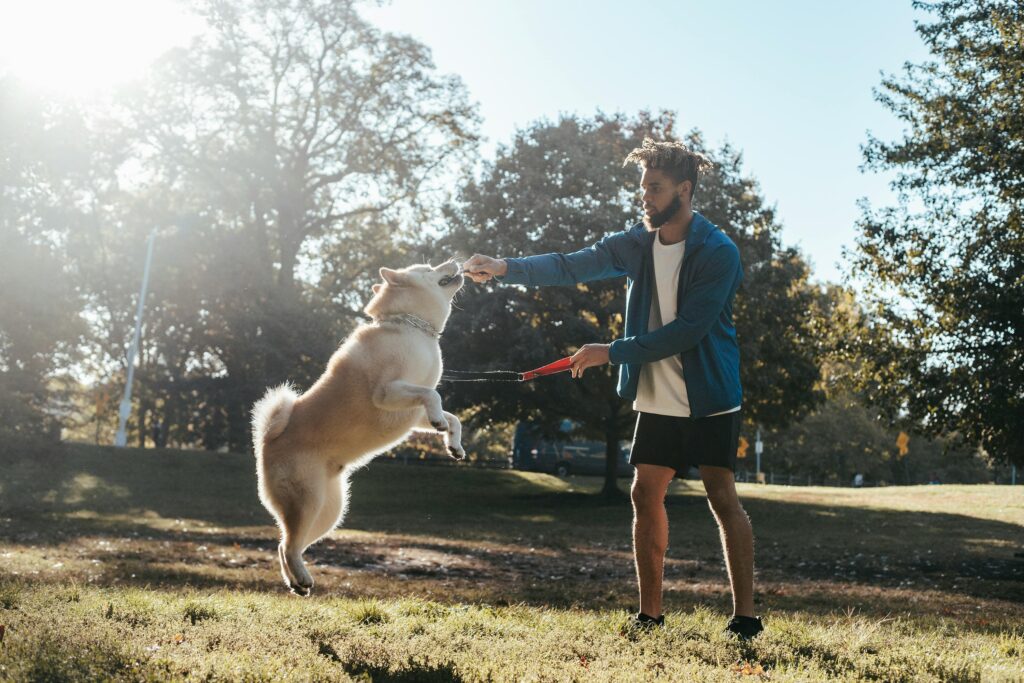Finding the right dog trainer can be as tricky as understanding the quirks of our furry friends themselves. With dog training being an unregulated industry, it’s super important to do your homework before signing up for sessions. What’s up for grabs? Well, your peace of mind, your wallet, and most importantly, your dog’s well-being. Before you dive in, remember the goal: to make sure you and your pooch walk out of training happier and smarter than when you strutted in.
Our four-legged companions are more than just pets; they’re family members who deserve the best. Understanding a trainer’s credentials, experience, and teaching methods is key in ensuring they’re up to the job. I mean, you wouldn’t hire a tutor for your kiddo without a background check, right? Likewise, embrace the role of detective and dig into whether these pros use positive reinforcement—because who doesn’t love treats and praises? Or if they’re stuck in the old school, telling Rover “no” a bit too often. Let’s embark on this journey to find a top-notch trainer who respects your furry sidekick’s individuality and meets both of your training needs.
Assessing Trainer Credentials and Experience
When you’re on the hunt for a dog trainer, think of it like you’re hiring a new member for your team. You wouldn’t just pick someone at random, right? The dog training world can be a bit like the Wild West—it’s unregulated, meaning practically anyone can hang up a shingle and proclaim they’re a trainer. But for your peace of mind and your pooch’s well-being, doing a deep dive into potential trainers’ creds is super important. So let’s break down what you need to look for in a trainer’s background.
First off, let’s chat about their education. Did they get formal training or are they self-taught? Just because someone’s been training dogs since the dinosaurs doesn’t necessarily mean they’re up to speed with the latest and greatest in training methods. It’s all about the balance between experience and keeping current. Ask the trainer about their educational journey and what they do to stay sharp because you’ll want someone who’s committed to lifelong learning in this field.
Importance of Professional Certifications
One quick way to sift through potential trainers is to scope out their professional certifications. I mean, anyone can read a book or watch some videos, but certifications indicate that they’ve passed some rigorous tests and earned their stripes. Look for acronyms like KPA-CTP or CPDT-KA which stand for Karen Pryor Academy Certified Training Partner and Certified Professional Dog Trainer – Knowledge Assessed, respectively. They aren’t just a fancy string of letters—these badges of honor show that they’ve really studied up on this stuff.
They’re not just about the book smarts, though. These certifications mean they’ve had hands-on experience and have been evaluated by pros who know their doggo stuff inside out. But always remember, a certificate is only part of the story—so looking further than the paper is key.

Evaluating the Trainer’s Education and Continued Learning
It’s not all about what’s hanging on their wall. You’ve got to quiz them on their education and commitment to ongoing learning. The dog world is always evolving, and so should they. Find out if they attend workshops, seminars, or conferences. This doesn’t just mean they’re learning—they’re networking too, and that means they’re typically serious about what they do.
A trainer who invests time into learning is someone who takes their profession to heart. Being educated also means they’re more likely to use humane, science-based methods, which is what we all want for our furry friends.
Seeking References and Success Stories
Got a trainer on your radar? Time to do some detective work and ask for references or success stories. Speaking to real-life humans who’ve been through their training programs can give you the lowdown on what to expect. And a reputable trainer should be more than happy to provide these contacts—transparency is golden.
If a trainer’s reluctant or dodgy about sharing references, it could be a red flag. Hearing stories about how they’ve handled and helped transform other dogs can give you confidence that they’re not just all talk.
Observing a Class: Transparency in Action
Ever heard the saying “seeing is believing”? Well, it applies to dog training too. Pop into a class and watch how the trainer interacts with the students (both two and four-legged ones). Here’s where you get a real feel for their methods—are they as positive and reward-based as they say? Do people and pooches look like they’re having a blast?
An open-class policy speaks volumes about a trainer’s confidence in their technique. If a class feels more like a party than a boot camp, and if dogs are wagging their tails rather than tucking them, you might just be on to a winner.
| Credential or Certification | Why It Matters |
| KPA-CTP | Indicates completion of a comprehensive training program with a focus on positive reinforcement techniques. |
| CPDT-KA | Highlights commitment to tested knowledge and ethical practices in dog training. |
Understanding Training Philosophies and Methods
Dog training might look simple, but there’s a whole lot of thought that goes into teaching your furry friend the ways of the world. Just like every pup has its unique character, trainers bring their unique styles and philosophies to the table. It’s kinda like matchmaking — finding the right fit for you and your pooch is super important. With the dog training industry being unregulated, it’s on us to do the legwork and figure out what philosophies and methods sit right with us and our dogs.
So, let’s talk shop about how to understand a trainer’s approach and why it matters. Whether you’re looking for basic obedience training like teaching your dog to play fetch, sorting out behavioral issues, or need specialized training like the ones for therapy or service dogs, knowing the training philosophy is crucial. Keep an eye out for buzzwords like “positive reinforcement,” “punishment-based,” and “balanced training” – they will give you a hint of what tools and methods a trainer might pull out of their hat.
Positive Reinforcement and Its Benefits
Positive reinforcement is the gold standard when it comes to training methods. It’s all about rewarding the good stuff your dog does – think treats, pets, or an excited “good boy!” This technique isn’t just throwing a party for your pooch; it’s based on the science of animal learning. By focusing on rewarding positive behavior rather than punishing the naughty stuff, you’re building a stronger bond with your dog and making training sessions something they’ll look forward to.
Here are some benefits of using positive reinforcement:
- It encourages trust between you and your dog.
- It creates a fun learning environment, reducing stress for both of you.
- It helps your dog learn and retain information better because they’re eager to participate.
- It lessens the likelihood of developing fear or aggression issues down the road.
Avoiding Trainers Utilizing Punishment-Based Methods
Now, on the flip side, we’ve got punishment-based methods. We’re talking about things like electronic collars, prong collars, and other tools that give your dog a less-than-pleasant response when they mess up. While some trainers might swear by these tactics, they’re not everyone’s cup of tea. Avoid trainers who rely heavily on these controversial methods, especially if they dismiss the use of rewards altogether. It’s not just about being kind to your canine; punishment can lead to a heap of issues, including fear and aggression, which is the opposite of what we want.
Keep an eye out for trainers who talk about “dominance” or being a “pack leader.” These phrases might look good on a TV show, but they’re outdated and can be a red flag for old-school methods that might not jive with modern, science-based training philosophies. The most effective and humane way to train is with positivity and understanding.
The Trainer’s Approach to Dealing with Behavioral Issues
What about when your dog isn’t just ignoring the “sit” command but is actually showing some gnarly behavioral issues? Say your pupper barks like mad at the mailman or is a bit too possessive with their squeaky toys — that’s when you want a trainer who has a specific and constructive approach to dealing with these behaviors.
Look for trainers who are all about understanding your dog’s body language and why they act out and who will use techniques to address and modify these behaviors positively and respectfully. It’s not just about stopping the behavior but teaching your pooch what they should do instead, leading to a happier, more relaxed dog (and owner).
The Inclusion of Family Members in the Training Process
Training isn’t a solo sport. It’s like bringing up a kid — everyone in the household needs to be on the same page for it to stick. When you’re shopping around for a trainer, find someone who’s keen on working with the whole gang. That means they’re happy to demonstrate to all family members (yep, kids included) how to reinforce the training in daily life. Consistency is key, and when everyone’s playing by the same rules, it’s a win-win.
Well-trained trainers know that they’re teaching you just as much as they’re teaching your pup. So, they’ll give you the strategies you need to keep the training going strong at home. After all, they’re not going to move in with you (at least, we hope not!), so empowering you to take the reins is crucial.
Specialized Training Services: Therapy and Service Dog Training
Does your dog have a higher calling? Maybe they’ve got the makings of a therapy dog, or you need a service dog to support you. If that’s the case, you want a trainer with the chops for specialized training services. This training goes beyond “sit” and “stay” and delves into much more intricate tasks.
Find a trainer with specific experience and credentials in therapy or service dog training because these roles demand a higher level of expertise. It’s not just about the certification (although that is important); it’s about their proven track record and specialized skill set. Ask about previous success stories and what specific programs they offer for these special pups.
| Training Type | Approach | Main Benefits |
|---|---|---|
| Positive Reinforcement | Reward-based, focuses on encouraging good behavior | Builds trust, enjoyable for the dog, effective learning |
| Avoiding Punishment-Based Methods | No harsh tools or physical corrections | Reduces risk of fear and aggression, promotes humane training |
| Behavioral Issues | Understanding the ‘why’, teaching alternative behaviors | Long-term resolution of issues, happier dogs |
| Family Involvement | Training the whole household | Consistency in training, better overall results |
| Specialized Training | Therapy and service dog training | Prepares dog for specific roles, professional competency |
Fitting the Trainer to Your Dog’s Needs
Choosing the right dog trainer is like picking a guide for a personalized journey—you gotta find someone who can connect with your fuzzy companion and steer both of you toward success. Since dog training is pretty much the Wild West with no regulations, anybody can hang up a shingle and claim to be a pro. But really, the key is to find a training maestro who jives with your dog’s vibe, helps you understand the whole shebang, and uses techniques you’re comfortable with.
Let’s tackle how to spot the trainer who can cater to your furball’s specific whims while not forgetting you’re a big part of this equation too. After all, it’s important that you’re both on board with the training plan, and that it meshes well with your lifestyle and beliefs about how your four-legged pal should be taught.
Group Classes vs. Private Sessions: Considering the Best Learning Environment for Your Dog
Envision a classroom—some students thrive in the buzz of group study, while others need that one-on-one attention to truly blossom. Likewise for dogs. Group classes offer primo socialization and help your pooch get comfy with distractions, kind of like learning to dance in a lively ballroom. But not all furry friends are ready for the prom night atmosphere, and that’s totally fine. For those who need a quieter setting to focus or have specific issues that need targeted attention, private training is the golden ticket.
Keep in mind though, choosing between group lessons or going solo isn’t just about your doggo’s personality—it’s also about convenience and your wallet. Private training can happen anywhere, from a park to your living room, but it may come with a heftier price tag. Peep the table below for a quick compare-and-contrast:
| Group Classes | Private Sessions |
|---|---|
| Excellent for socialization | Tailored one-on-one attention |
| Can be less expensive per session | More flexible location and scheduling |
| May include integrated family training | Potentially higher cost but more focused training |

Addressing Specific Training Goals and Behavioral Challenges
Dogs are like snowflakes—no two are quite the same, and each comes with their own quirks and charm. Some furry babies might just need the basics, such as remembering that the couch isn’t a chew toy or using a doggy door properly, while others have behaviors that require more nuanced help. You’ll want to choose a trainer who has chops in addressing the particular needs of your pooch, whether it’s about mastering a polite sit-and-stay, or working through marquee-worthy escape tactics.
Plus, your dog’s breed, age, and past experiences can all dictate the type of training needed — a savvy trainer will take all these into account. Ask the trainer how they tackle specific issues and if they have experience with similar cases. A trainer worth their salt will have a plan ready for your dog’s unique storyboard.
The Trainer’s Compatibility with Your Dog’s Personality and Your Training Style
It’s not just about expertise—it’s also about mojo. A trainer might have all the certifications you could ask for, but if they don’t gel with your dog or if they rub you the wrong way, it’s probably not going to be the blockbuster team-up you’re hoping for. A training duo should feel like buddies embarking on an epic road trip, not two grumps sharing a long elevator ride. Get the lowdown on the trainer’s style and make sure it vibes with yours — and most importantly — with your dog’s.
During your quest, throw open the doors of communication. Chat up with potential trainers to gauge their people skills—because as much as it’s about teaching your dog, it’s equally about guiding you on how to maintain and reinforce those new skills. Observe how they interact with other dogs and owners. Are they the Mary Poppins type or more of a drill sergeant? Make sure you’re signing up for a fun, positive experience that aligns with what feels right for both you and your doggo.
Ensuring the Trainer’s Methods Align with Your Beliefs and Expectations
Everybody has their philosophy on how the learning should go down. Positive reinforcement—doling out treats and praise when your dog nails it—is the gold standard according to animal learning science. It’s all about encouraging good manners while also cementing your buddy status with your canine. Steer clear of trainers who lean heavily on punishment or outdated “alpha” power moves—that’s like using a hammer when a friendly pat on the back will do just fine.
Sniff around for a trainer who sings from the same hymn sheet as you do. If their toolkit is brimming with scary sounding gadgets like choke chains or they harp on about dominance theory, it’s probably time to keep hunting. Look for someone who promotes trust and mutual respect instead of fear. After all, who wants to learn from someone they’re scared of? Not your dog, that’s for sure.
The Importance of Communication Skills in Effective Training
Here’s a little insider scoop: training is actually more about coaching you than your dog. Yep, you heard that right. In this gig, the dog usually picks up the tricks of the trade relatively smoothly—it’s the human that needs the nudge to get the hang of the new routine. A trainer who can break it down in human-speak, offer clear guidelines, and give you the confidence to take the reins is someone you want in your corner.
Observe a class to see if their style of communication makes sense to you—are they clear, patient, and do they explain why they’re having you do certain things? Do the humans and canines leave the session looking happy and empowered? These are your clues that a trainer is worth their kibble in gold when it comes to teaching both ends of the leash.
Location and Accessibility of the Trainer: Convenience Matters
Let’s face facts: even if you’ve found the dog whisperer of your dreams, if they’re a four-hour drive away, that could be a deal-breaker. Convenience is a biggie when it comes to keeping up with training sessions. Whether the trainer is a hop, skip, and a jump away or they offer to venture into your own abode for at-home training—location can sway your choice.
Be practical about this, weigh the options, and consider the sacrifice-to-benefit ratio. You want dog training to be a smooth part of your regular routine, not a mission to Mordor. Check if the trainer can accommodate your location preferences, and how that might affect the cost.


